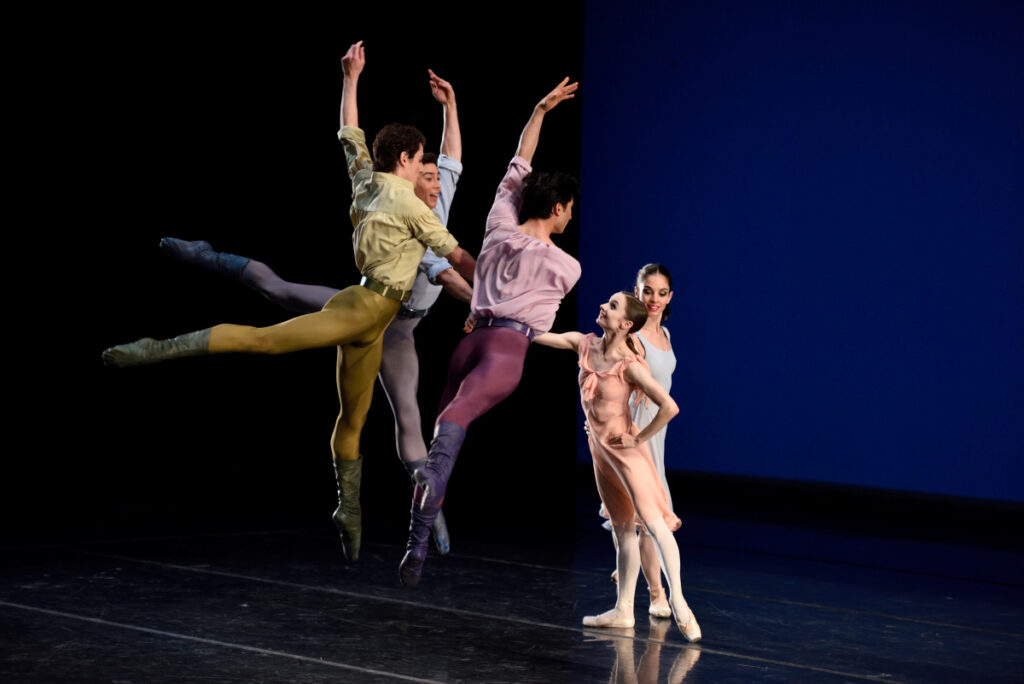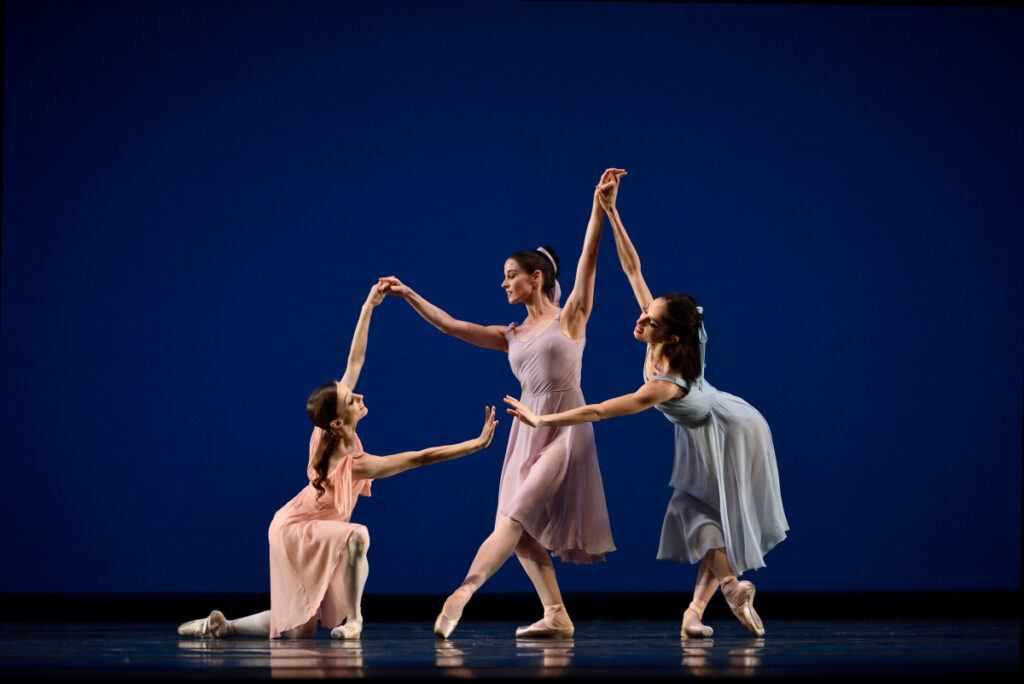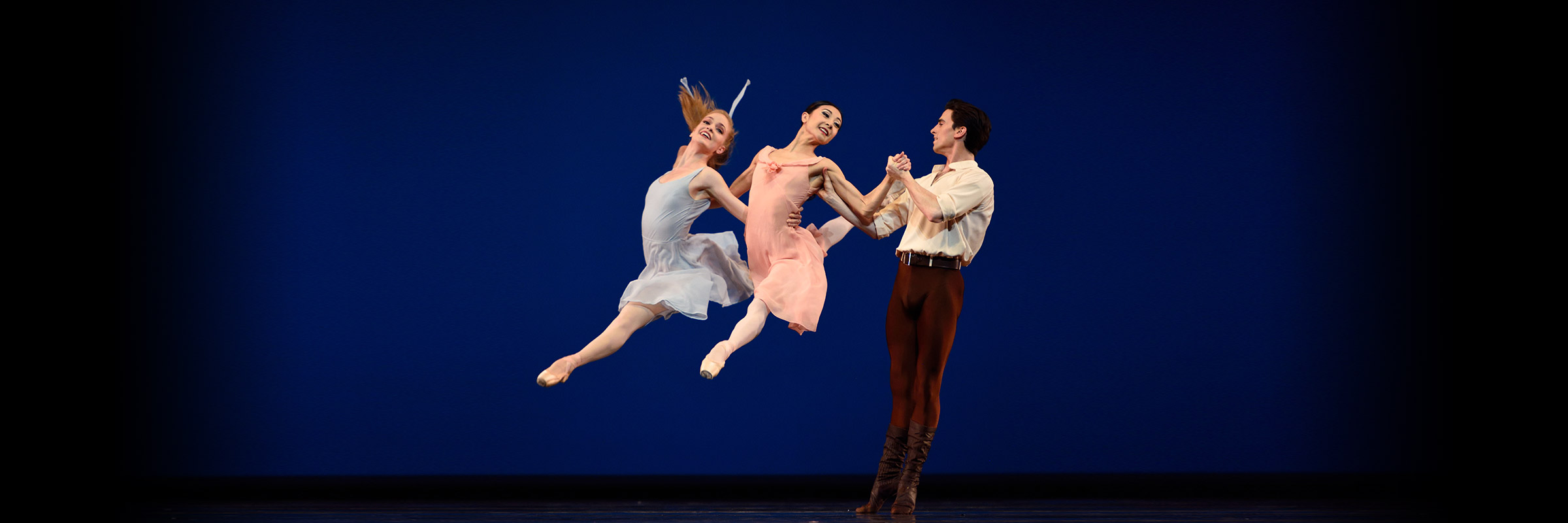About Robbins’ Dances at a Gathering
Freedom, Community, and Joy
Say the words “community” and “choreographer” to a ballet lover and ask what comes to mind: chances are the answer will be “Jerome Robbins.” And the answer might include mention of one of his most widely loved ballets, Dances at a Gathering. A series of dances, nothing virtuosic, set to Chopin piano music, this ballet “should look like a group of friends together, just dancing,” says Robbins Rights Trust stager Jean-Pierre Frohlich. “Simple as that. And that’s what’s so beautiful about it.” Robbins said there’s no story; the dancers are merely being themselves—but they are also, as writer Deborah Jowitt put it, “members of a community that lives in Chopin’s music.”

What elevates Dances at a Gathering beyond its simple ingredients is “how it was put together, the simplicity of it, the pure dance form,” says Frohlich. Robbins created this ballet five years after Fiddler on the Roof premiered on Broadway; both reflect his explorations of his Jewish heritage. “He used to analyze himself: ‘Why? How did this come to be?’” Frohlich says. “I think this ballet in particular meant a lot to him.” Robbins wrote that Dances at a Gathering “is full of the things I loved about dancing and about being Jewish.”
Helgi Tomasson, Patricia McBride, Jean-Pierre Frohlich, & Ellen Sorrin on Robbins
In staging this season’s production, Frohlich referred to a video from the ballet’s premiere year, 1969, because of “the sense of movement and wind blowing,” he says. Over the years he’s seen this ballet “slowly get smaller and smaller, and I felt that wasn’t the original intent.” He wants today’s dancers to move like those in 1969, with “a sense of devouring space, abandonment in the movement but without being out of control.” Also important, he says, is giving the dancers information and boundaries, “but then letting them make it their own. Jerry would do that. Everyone has this impression that Jerry had to do it this way—sometimes he was like that, but if he trusted you as a dancer he let you have the freedom.”

San Francisco Ballet Artistic Director & Principal Choreographer Helgi Tomasson was one of those trusted people; he danced many of Robbins’ works at New York City Ballet. “With Robbins, so often, there is humanity in his ballets,” Tomasson says. With Dances at a Gathering, “even though there’s not a story, you feel that there’s a community, and joys, and loves, and humor. It all comes through.”
Principal Dancer Esteban Hernandez and Soloist Lonnie Weeks on Robbins
It’s true that community is key in Dances at a Gathering, but so is memory. Memories propel the Man in Brown to move at the ballet’s beginning, says Tomasson, who performed that role many times. “It was like I’m in deep thought about what was,” he says. “It’s not like I start dancing because the music starts; it’s more that the music is coming from a distance and all of a sudden I remember.” In the poignant ending, “all 10 dancers are gazing at the sky and a storm is passing,” says Tomasson, “and the story has been told, or the memory has taken its course.” In these final moments, the Man in Brown kneels and touches the floor. “When I danced it in New York,” says Tomasson, “it was like I felt the floor coming back at me: ‘This is mine. This is my career. This has brought me to where I am, and what a wonderful, warm feeling that is.’ Yet when I danced it in Poland [Chopin’s birthplace], it changed. It was like an emotional electric charge that went through Robbins to Chopin—a connection, almost like Chopin’s spirit was around.”
What has given Dances at a Gathering longevity is its purity and simplicity, Frohlich says. “It was really just how Jerry related to the music and what the music meant to him. He used to say, ‘Let the music make you dance.’”
by Cheryl A. Ossola
Header Image: San Francisco Ballet in Robbins’ Dances at a Gathering // © Erik Tomasson








